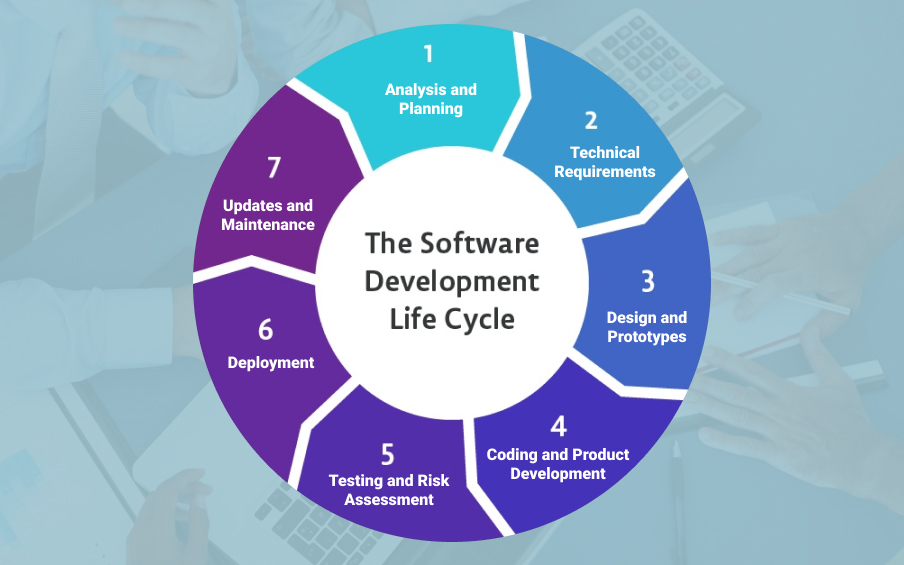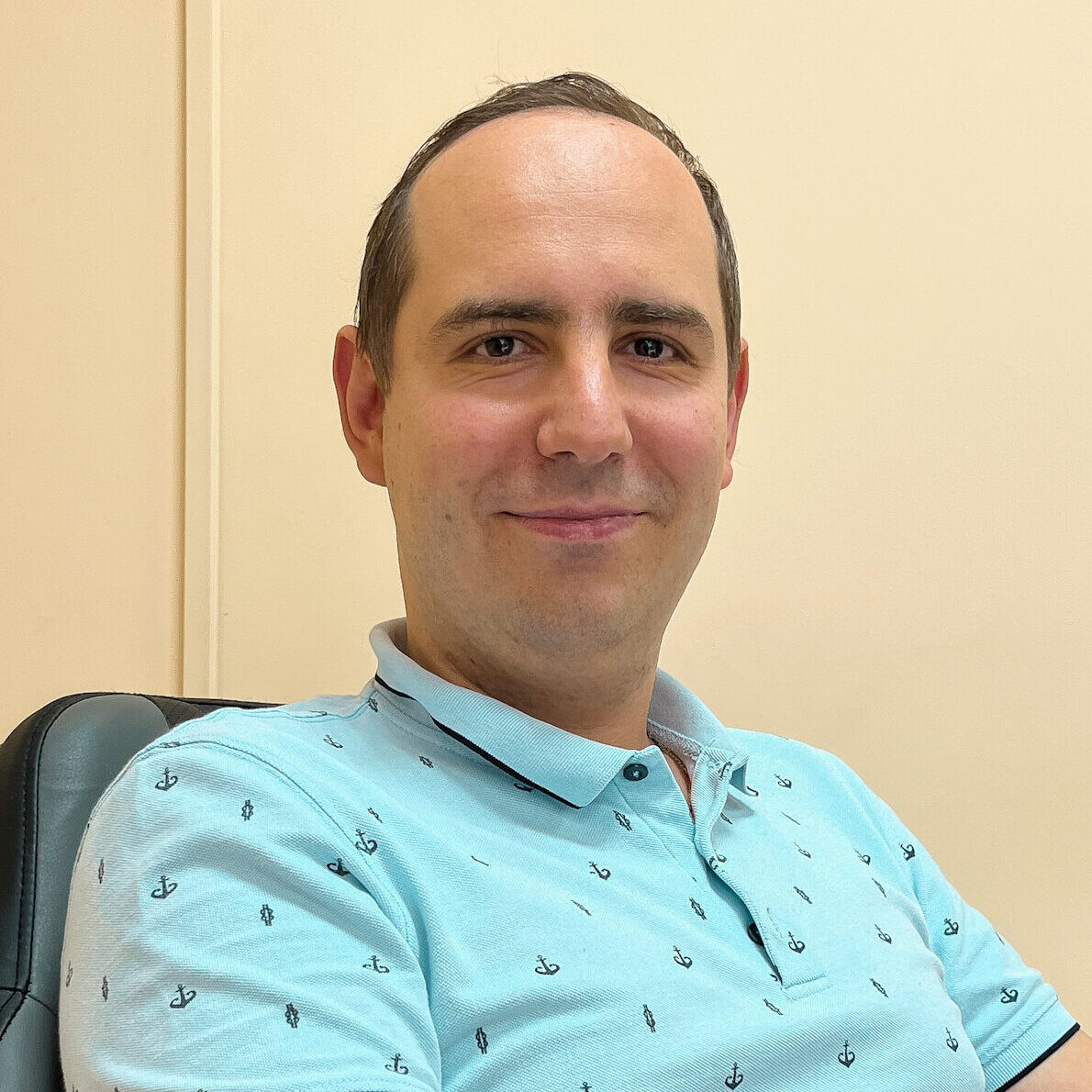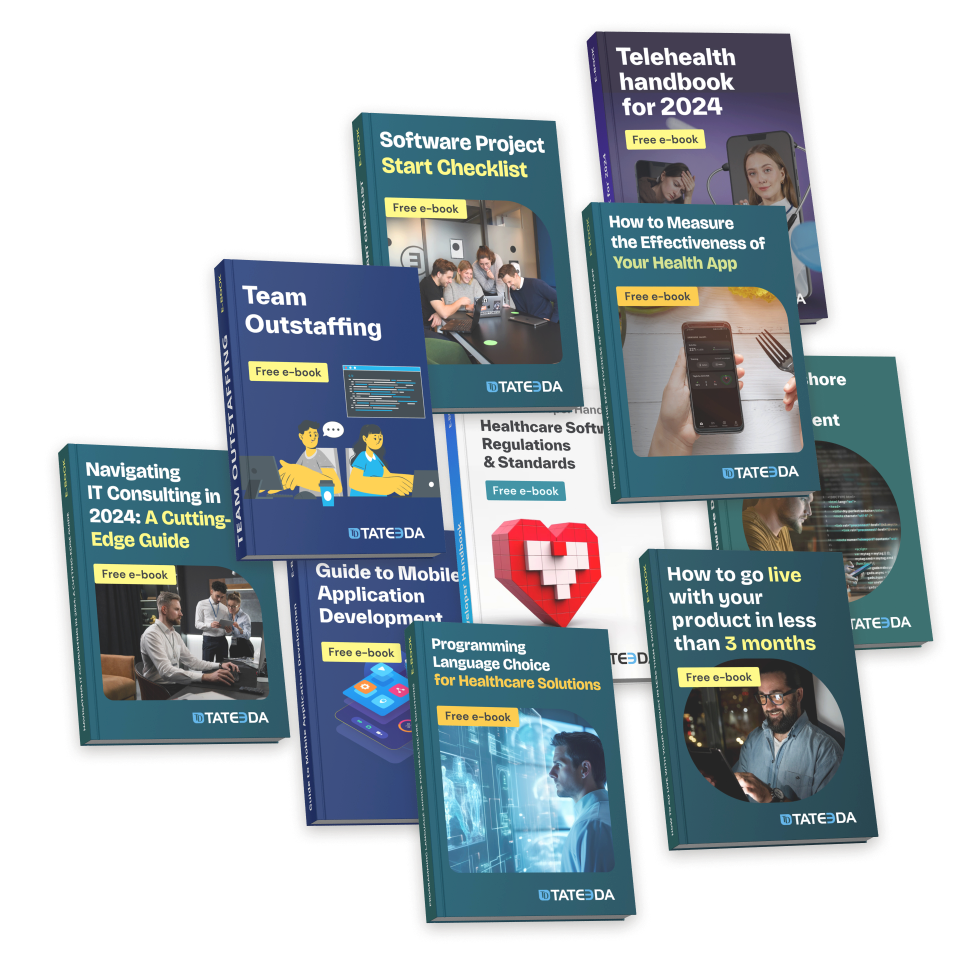Software Product Development Life Cycle [2024]

In this article, we’ll talk about the basic stages of the software development process. This piece is based on expert advice contributed by TATEEDA GLOBAL’s developers and project managers.
As innovations in technology make inroads into every facet of business and personal life, the demand for more sophisticated and complex software solutions have businesses scrambling to find experienced software development company in San Diego who can create next-level solutions to meet their needs.
Fundamental to any software development project is a systematic approach to the end-to-end software development process. With a well-ordered process in place, experienced teams are able to explore creative and transformative possibilities to satisfy their clients’ specific requirements.
Who are we?
At TATEEDA GLOBAL, we’re experts in custom medical software design and development. Our company is located in San Diego, California. We specialize in building HIPAA-compliant products that facilitate business processes for healthcare professionals across the United States. Thanks to our R&D office in Ukraine, we offer the best software development rates. Learn more about our important projects in this case-study portfolio.

Table of Contents
The Software Product Development Steps: Major Stages of Software Development
Depending on who you ask, the software development lifecycle (SDLC) consists of five to seven stages of software development. These stages cover everything from project requirements to communication with stakeholders, product design and development, testing, and maintenance.
All software development projects go through the same stages, regardless of which development approach you use. However, their order and sequence may vary based on your project specifics, goals, and team size. At TATEEDA GLOBAL, we adhere to the highest software development standards accepted in the industry, including rigorous HIPAA compliance in our medical custom-developed products.
Let’s look at the seven stages of the software development lifecycle:
- Analysis and planning: The first phase involves information-gathering and strategizing. Before taking on a new project, be sure you have ample human, technological, and monetary resources to fulfill your project requirements. Project managers, developers, and other stakeholders should be included in the planning stage. At the end of this stage, you should have a detailed Scope of Work (SOW) that specifies the project’s whats, whys, and hows.
- Technical requirements: This phase delves deeper into your product’s technical requirements. You should come away with clear ideas of what the end product will be used for and who will use it, which problems it will solve, whether it will need to be integrated into existing systems, the datarequired, and what the security needs will entail. This is also the stage at which decisions are made about the technology stack and testing requirements. You should also begin sprint planning for Agile processes or planning actionable steps for other processes. Learn more about the 14 Major Healthcare Technology Trends.
- Design and prototypes: This is where you form an idea of how your end product will look, feel, and function. Developers can create simple wireframes or prototypes to see how features will interact, or possibly develop a functional prototype to get feedback from users. For more complicated software solutions, it’s necessary to execute software architecture efforts. This means the involvement of experienced software engineers capable of creating complex designs that feature multiple factors and interactions. It’s crucial to eliminate security gaps as early as possible and avoid data breaches into the future. Learn more: The Growing Importance of Software Development Security.
- Coding and Product Development: With a clear vision for design and functionality, it’s time for the dev team to roll up their sleeves, start writing code, and piece it all together with SOW in mind. There is a wide range of methods and principles to choose from when building a software product. It’s necessary to comply with сorrectness, optimal resource consumption, modularity, scalability, completeness, and maintainability. Learn more about The 5 Goals of Good Software Engineering.
- Testing and Risk Assessment: Testing, tracking, and bug-fixing are integral to software product development as they reduce the risk of bugs and failures in the finished product. While iterative and incremental processes incorporate testing at every phase, more in-depth testing of the completed product is needed before full deployment. This may involve beta testing with a small group of users or using UX tools to get an idea of how users interact with the software. Read more about Medical Software Testing and Quality Assurance in Medicine.
- Deployment: Once you have finished testing your product and are satisfied with the results, it’s time to release your software to users. One of the most important aspects of this stage is making sure that users are trained and skilled enough to use the application productively. Also, undiscovered bugs or unpredicted compatibility/usability issues can emerge, so your development team should be kept on standby to swiftly alleviate any potential problems. (However, if you have correctly completed the software design process, these issues will be reduced to a minimum).
- Updates and Maintenance: Customer satisfaction doesn’t end with launching a product. As users begin to interact with your software, bugs may arise, additional features or functionality may be requested, and software must be maintained and upgraded on an ongoing basis. Read also: Healthcare Software Maintenance: Importance, Methods, Costs.

Slava Khristich
Healthtech CTO
Based in San Diego, Slava knows how to design an efficient software solution for healthcare, including IoT, Cloud, and embedded systems.
Software Design Process Steps: Purpose and Stakeholders
The development process in software engineering normally starts with one keystone sub-process: software design, which deserves a separate section to be explained in more detail. Successful execution of the software product design process (or sub-process) guarantees painless development and implementation of your product in later project phases.
Please keep in mind that the software design approach provided below is not a dogma. Actually, there exist different variations of this process, and it can vary from company to company, depending on project specifics. The proposed version is one of the most commonly used:
Read also: Patient Portal Design and Development Guide
Step #1. Architectural, Conceptual, or Domain Model Design
The highest abstract-based vision of your future software system.
Purpose: In this step, you identify the multitude of business processes or goals your future software will be required to execute. Basically, it’s about drawing a diagram that includes general components, inputs, outputs, and modules with mutual interactions and the values/functions delivered within the system.
Stakeholder roles: The product/project owner (or other business representatives) are the most important stakeholders at this stage. They should explain their vision, set business requirements, and talk about expected software outcomes and results. The task of the software engineer is to conceptualize client requirements in well-arranged diagrams and business logic maps while capturing desired use cases and scenarios.
Goal: To deliver the final software architecture document, which will be clearly understood and agreed upon with project sponsors/owners and other stakeholders. Client confirmation is absolutely necessary in order to move on.
Step #2. High-level Design
Purpose: At this stage, you drill down into greater detail. When the main abstractions of the software model have been identified, it’s time to divide them into groups/networks of more specific components and process/sub-process schemas.
This stage requires the elevation of higher-level abstraction to more specific elements and modules. General software/functionality goals and visions should be converted to specific definitions of objectives and interactions. At this level, software architecture engineers define technology domains and areas to be included, e.g. front-end/back-end layers, IoT connectivity points, desktop-based solutions, embedded development, and more (as required by project).
Stakeholder roles: Software engineers add more detail and specifications on every aspect of the software, including technologies and tech processes. Project owners/sponsors should receive an exhaustive explanation for all tech-related conceptions and decisions, and obtain solid argumentation for technological choices, if required.
Goal: Provide a technologically rational, feasible plan for the software project. Some subjects that can be mentioned at this level include client applications, server applications, database, user interface, queries, data fields, and so on.

Step #3. Detailed Design
Purpose: Getting closer to coding and project-implementation phases.
At this stage, it’s necessary to create the ultimate executable version of your plan which can be presented to the implementation team (software developers and other specialists). Each section of your high-level design should be zoomed in and elaborated upon with the appropriate corresponding IT specialists. At the end of this stage, your high-level plan should be broken down into specific tasks and assigned to appropriate specialists.
Stakeholder roles: Software engineers collaborate with project managers and other team members to transform high-level design figures into specific, assignable chunks of work.
Goal: A detailed plan covering security risks, technologies, and the individual responsibilities of team members. If your software product has been successfully led through all three major steps of the design process, it can be considered nearly free of serious security flaws and risks.
| Software Design Steps | Summary |
| Principal / Conceptual Architecture | Engineers and project owners create and plan business processes to be managed with the help of projected software. |
| High-level Design | Engineers beef up the plan with details and sub-processes, then agree upon vision with project owners. |
| Detailed Design | Engineers collaborate with project managers and developers to break the project into manageable tasks. |
Find a software design and development partner in CA: The 7 Best Healthcare Software Development Companies in California for 2022.
Do you need a tech partner capable of designing optimized, well-planned software products and systems?
At TATEEDA GLOBAL, we select and execute the best software development process strategy for you, including business logic design steps adapted to your business specifics. If you’re interested in an experienced tech partner to help you create a medical software solution in the shortest possible amount of time, do not hesitate to contact us!
All development process steps and nuances are negotiable. They will be discussed with you and adjusted in accordance with your goals, deadlines, and expectations once you provide us with your project details.
Read also: How to Find and Hire Healthcare Software Developers for Your Medical Projects
Software Development Process Options
While all software development goes through essentially the same lifecycle, there is more than one systematic approach to the development process. Deciding which to use is the prerogative of the software development company and/or development team.
Read also: How to Develop Hospital Management Software.
Here are a few of the available options of our software development process:
- Waterfall: This approach is a traditional linear sequential model that is plan-driven. With this model, all tasks associated with a given phase of the SDLC are completed before progressing to the next phase. With Waterfall, the product-testing stage is postponed until after design and implementation, which is perhaps its biggest drawback. Waterfall’s rigid structure works best for large projects with specific documentation needs that must be signed off upon before the project begins (for example, large projects for government agencies).
- Agile and Scrum: Agile is a loosely structured software development process, and Scrum is its most popular methodology. Scrum is a dynamic approach that is iterative in nature. Simplified usable software is released to its proprietor for feedback after sprints of two weeks to two months. The software progressively becomes more complex with each iteration, progressively gaining more features until the end product is completed. The Agile process is well-suited to startups and tech companies that are continually updating new products. It is less appropriate for projects with tight budgets and rigid timelines.
- Incremental: The incremental process is more structured than Agile, but follows its practice of creating small increments of software and releasing them to the client for feedback. With each increment, a simplified version of a function or feature is added based on feedback. This approach is good for large projects with a structured overall plan that need flexibility with minimal risk.
- V-Shaped: This approach is a variation of Waterfall, but it incorporates testing at every stage. Use the V-shaped approach for smaller projects with specific requirements and limited scope.
- Spiral: The spiral approach combines testing and risk assessment with the incremental and iterative nature of Agile. Developers create a prototype of new features and test it with users, assessing it for risks before fully developing it. Results are then evaluated, and the next phase is planned. This approach is best for large or critical projects with low risk tolerance. Spiral’s calculated approach can be time-intensive and costly, making it less popular among developers than other processes.
Read also: Medical HR Software Development
Custom Healthcare Solutions
See how we can engineer healthcare software, validate your ideas, and manage project costs for you.
Looking Ahead to Future Trends
As the ways we live and work evolve, so will the demands for software products and the processes we use to develop them. Future software development initiatives will have three key drivers:
- Autonomy: There will be a growing demand for systems that can run, manage, and repair themselves with minimal human intervention.
- Automation: Machine learning and artificial intelligence will play increasingly important roles in software solutions that replicate and replace human labor.
- Abstraction: Easy-to-use interfaces will make complex computer processes and functions more accessible to the average user.
Forward-thinking software development process companies will be on the lookout for talented, experienced developers with a vision for the future to round out their development teams.
Read also: How to Choose & Hire the Best Software-development Staff Augmentation Company
Superior Software Product Development at TATEEDA GLOBAL
No matter how complex or demanding your software needs, TATEEDA GLOBAL’s stellar development team has the expertise and experience to meet your specifications for a superior end result.
We test and troubleshoot at every stage of the development process to guarantee that your custom software will perform flawlessly, without bugs or failures.
At TATEEDA GLOBAL, we’re specialists in developing and maintaining HIPAA-compliant medical software systems. Our project portfolio includes:
- Medical staff-management platforms
- Web and mobile patient portals
- Patient electronic data-capture (EDC) solutions
- Remote health-monitoring apps
- Automated laboratory-testing systems
- Pharmaceutical business automation solutions
- Pharmacy claims-processing and medication fulfillment systems
Contact us today! Let the professionals at TATEEDA GLOBAL create a high-performance solution to catapult your company’s success in 2021 and into the future.









